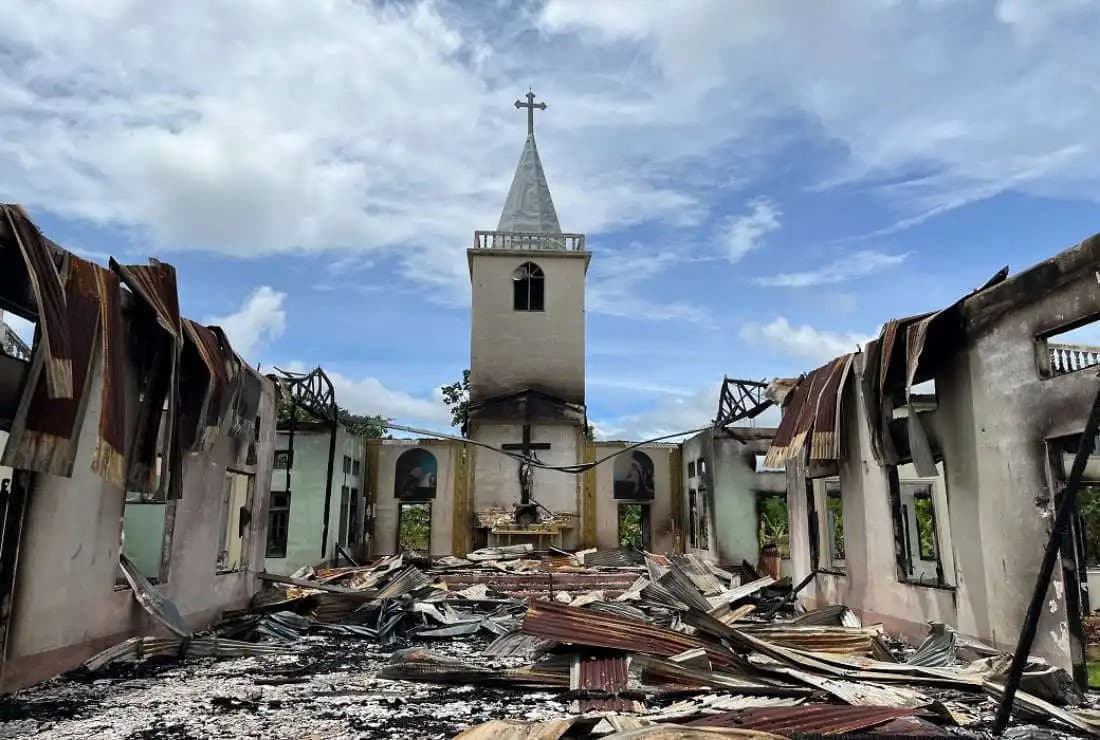As civil war takes hold in Myanmar, the fate of Christians is more precarious than ever, and they are unfortunately among the first victims of this conflict.
The deadly strike (at least 50 dead) carried out last April by the Myanmar army against a village in the center of the country briefly brought the conflict that divides the country back to the fore. A conflict in which Christians are among the first victims.
Since gaining independence from British India in 1948, Myanmar has lived through a succession of military dictatorships since 1962, and a civil war of varying intensity between the majority ethnic group, the Bamars, and the numerous ethnic minorities. In 1988, major pro-democracy demonstrations took place in Myanmar, and the opposition movement to the military dictatorship found a leading figure in the person of Aung San Suu Kyi, daughter of General Aung San, the father of independence. Demonstrations were crushed by heavy repression. Despite this, the regime holds, on thanks to support from China. In 2010, the military junta embarked on a gradual democratization process; but in February 2021, fearful of losing all its power, it staged another coup d’état. Since then, the country, already hard hit by economic crises, has suffered a civil war that has claimed over 30,000 lives.
By the force of events, several movements converged—notably the demonstrators who, after protesting against the military coup, turned to armed struggle under the banner of the “People’s Defense Forces,” and the various guerrilla movements initiated by ethnic minorities. For the past two years, the conflict has been at a standstill, with the military junta holding the major cities and the opposition forces managing to control fairly extensive territories.
The regime has announced elections for autumn 2023, to legitimize the situation created by the coup. This is likely to lead to even more violence, as the regime is determined to force the population to vote, and the opposition will do its utmost to demonstrate the regime’s lack of legitimacy by boycotting the elections. It is difficult to predict what the international community will do. While China firmly supports the military junta, there are signs that it may press for negotiations, particularly if the war threatens its direct economic interests. On the other hand, possible support from the United States could shift the balance in favor of the opposition.
In this context, the military junta specifically targets Burmese Christians (6.2% of the population), most of whom belong to ethnic minorities. Burmese nationalism mixes Bamar nationalism with religious adherence to Buddhism—all the more so as the Bamars are almost all Buddhists. This was already evident during the Rohingya crisis—this Muslim minority present in the northwestern state of Arakan fell victim to ethnic cleansing in 2017, causing 1 million of them to flee to Bangladesh. They were targeted as foreigners—Muslims and non-Bamars. The same logic applies to other ethnic minorities, albeit in a less radical way—it’s difficult to see them as foreigners, and some of them are Buddhists, although evangelization is progressing. Numerous testimonies indicate that Burmese armed forces specifically target churches in their attacks. There is even “systematic and rather diffuse persecution,” with the Catholic Church, for example, “not allowed to build new buildings or have bank accounts” (Father David Michael de Penha, Nuit des témoins de l’AED, January 2023).
There seems to be little prospect of a solution. The conflict continues to drag on, threatening to destabilize neighboring countries, some of which are already fragile (Bangladesh, Thailand, India). The best-case scenario, the opening of new negotiations, is unfortunately unlikely at present. The generals seem convinced that their repression will eventually defeat the opposition, and they do not hesitate to resort to Buddhist fundamentalists to win the support of the masses—this leads us to fear the worst for religious minorities.
Rainer Leonhardt writes from France. This article appears through the kind courtesy of La Nef.
Featured: Church burned by the Myanmar military, Daw Ngay Ku village, Hparuso township, Kayah State, June 27 and July 4, 2022 (Photo: AFP).
